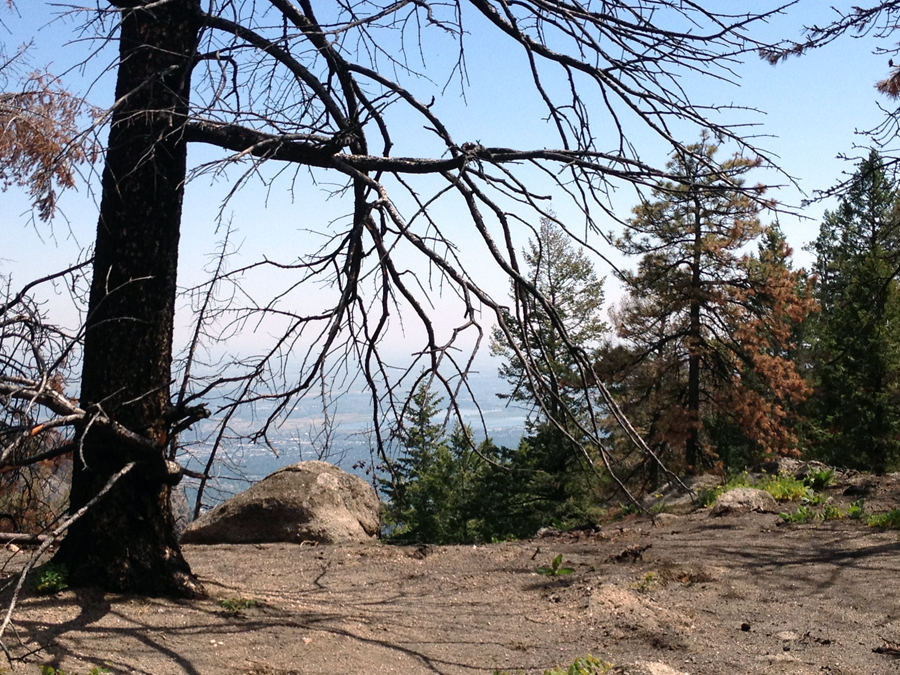A year ago today, the Flagstaff Fire roared across the mountaintops at the western edge of Boulder. Down below, we anxiously followed the plume of smoke, tracing the widening circle of flames across the peaks. Was this the big one, the fire that would catapult itself on the wind down into the city? Aggressive fire response from all departments in the region laid our fears to rest. The fire smoldered and burned out, and no embers skipped into town.
Seven weeks later, Dave Sutherland toured the fire zone and offered this photo essay. Even after only seven weeks, some plants had roared back, not only sprouting leaves but also in that short time sending out flowers, which attracted insects, who in turn attracted birds. Woodpeckers were busy combing blackened bark for roasted bugs; new life was flourishing in the fire zone.
It’s been a year, and how does the fire zone look now? Recently I had the rare treat of seeing the mountaintop without enduring most of the climb to get there. Dave organized a special hike for nature educators, driving us up almost to the edge of the burn area.
On our way up the mountain we stopped along one of the fire roads and took a look from a distance at the burn. Even on a hazy morning we could see that the fire had traveled a Y-shaped path up the west ridges of Bear Peak, on the left, and South Boulder Peak on the right. The saddle between the two mountains saw much less fire and remains green.
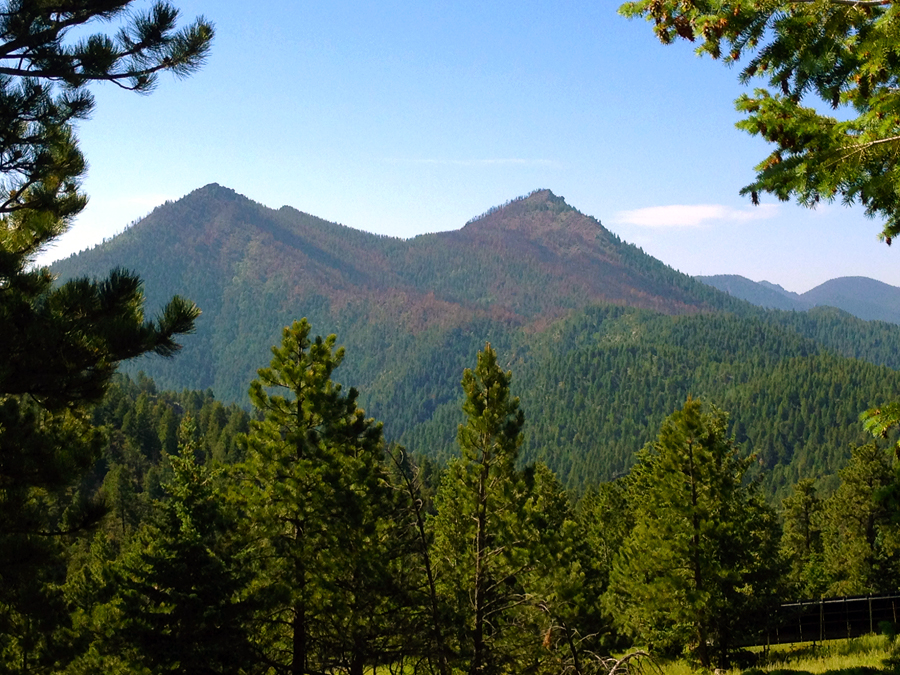
Fire loves to go uphill because the heat rises ahead of the flames, parching the ground and preparing it for combustion. Once the flames crest a hill, they have a much harder time moving down the other side, which is why a year ago today, Boulder faced a larger danger by far from wind. Gusty winds could have deposited embers in the heart of town; it was a lot less likely that the fire would march straight down the Flatirons.
Near the fire zone, we climbed out and admired the carpet of blue mist penstemon.
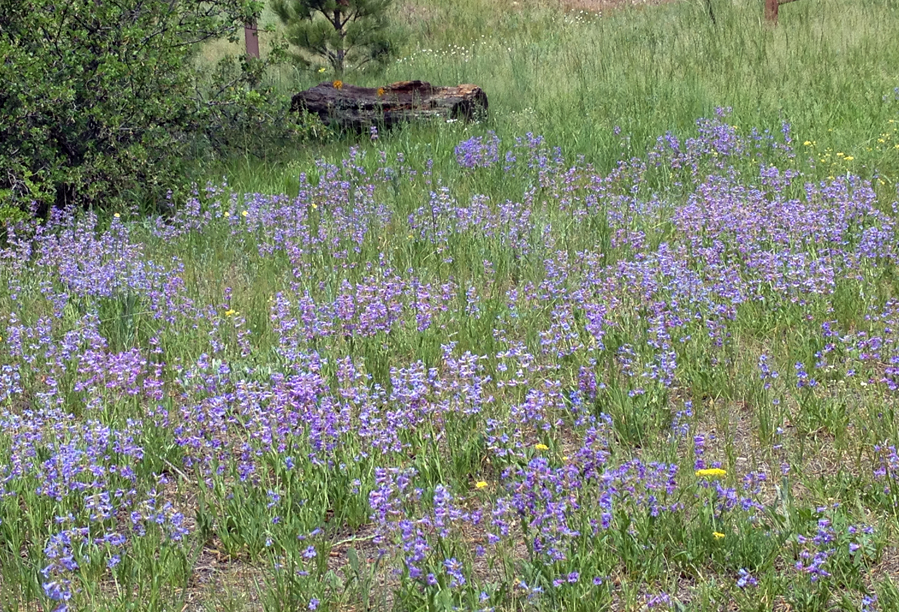
The scene changed just a short distance up the hill. Inside the fire zone, penstemon were blooming again, but only a few of them. Penstemon roots are 6–9″ long, which shows that the fire was not hot enough in this particular spot to disturb the roots of every plant.
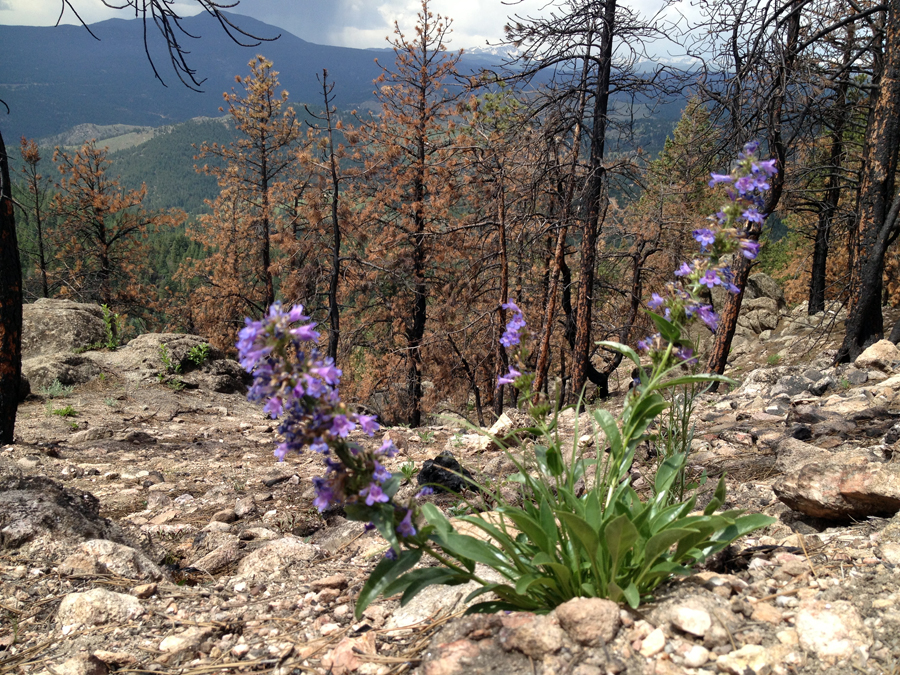
Yet turn around, and we saw behind us two holes in the ground—only a memory of two young ponderosas. In this spot, the fire blazed hot enough to vaporize even the roots of the trees. Each cavity is now adorned with a sprig of the invasive prickly lettuce.
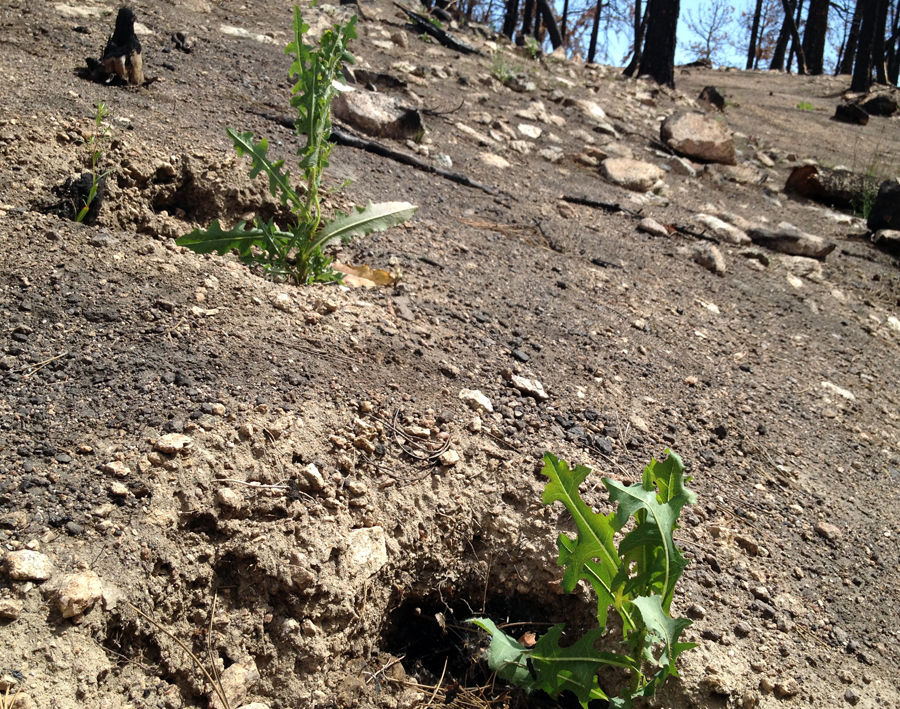
If the ground looks charred, it also shows a great deal of fresh green. Much of the earth is covered with a patchy layer of new plants and flowers.
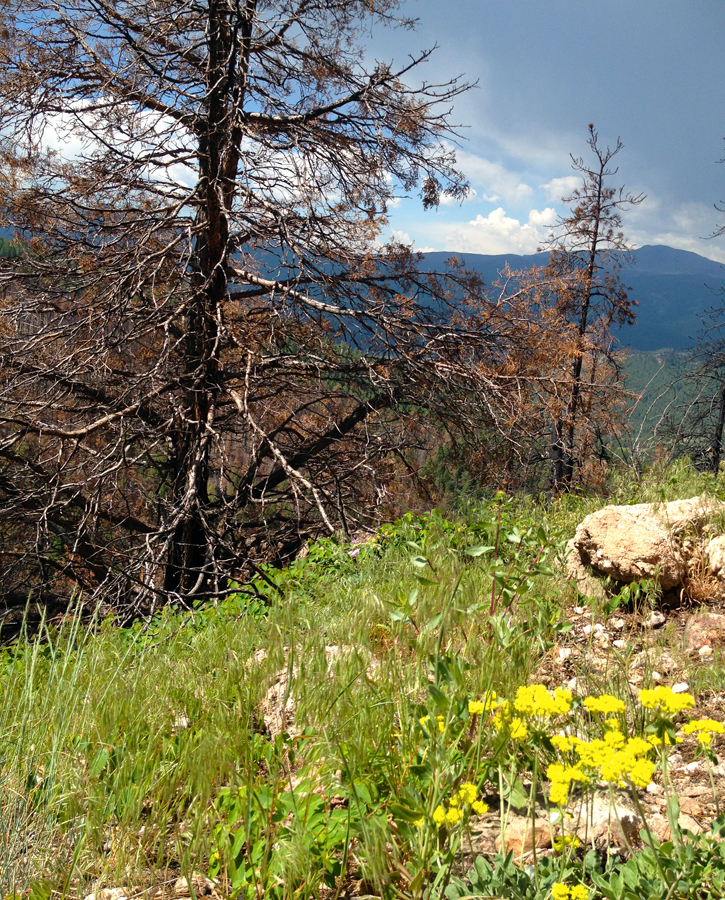
Perhaps my favorite from the morning was golden smoke (Corydalis aurea), the only flower of its family to grow in Colorado. Before the fire, golden smoke was not common around here. Now it is springing up everywhere in the fire zone. It prefers light shade and forest clearings, which explains why when this forest was cleared by fire, golden smoke seized the day.
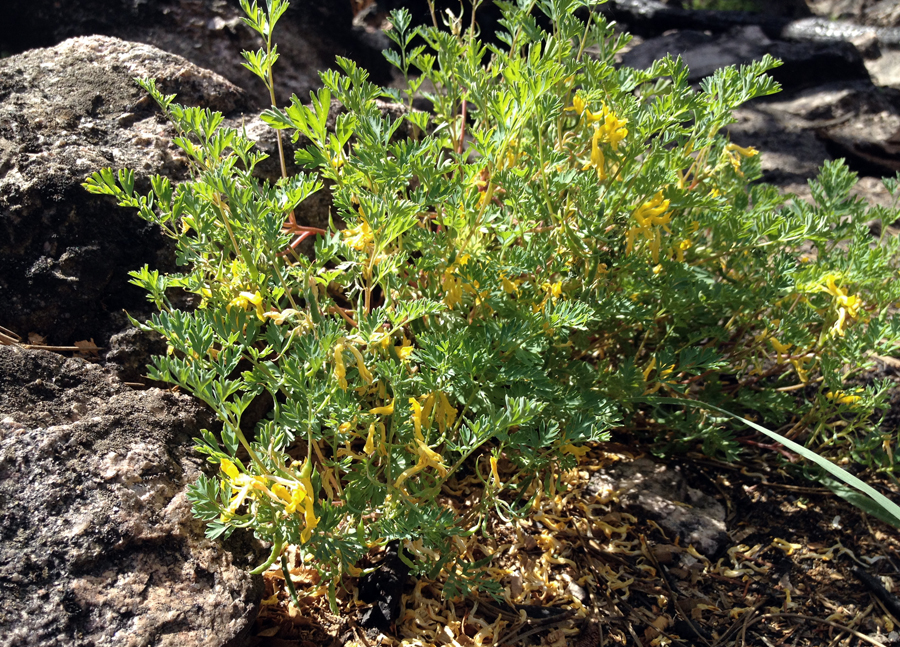
Dave pointed to a blackened ponderosa pine. “See the patchwork on the bark?” he asked. “Woodpeckers do that.” After a fire, he explained, woodpeckers pick a spot on a burned trunk and get busy, flipping pieces of bark left and right as they search for bugs underneath. Pretty soon the blackened tree is a mosaic of black and tan.
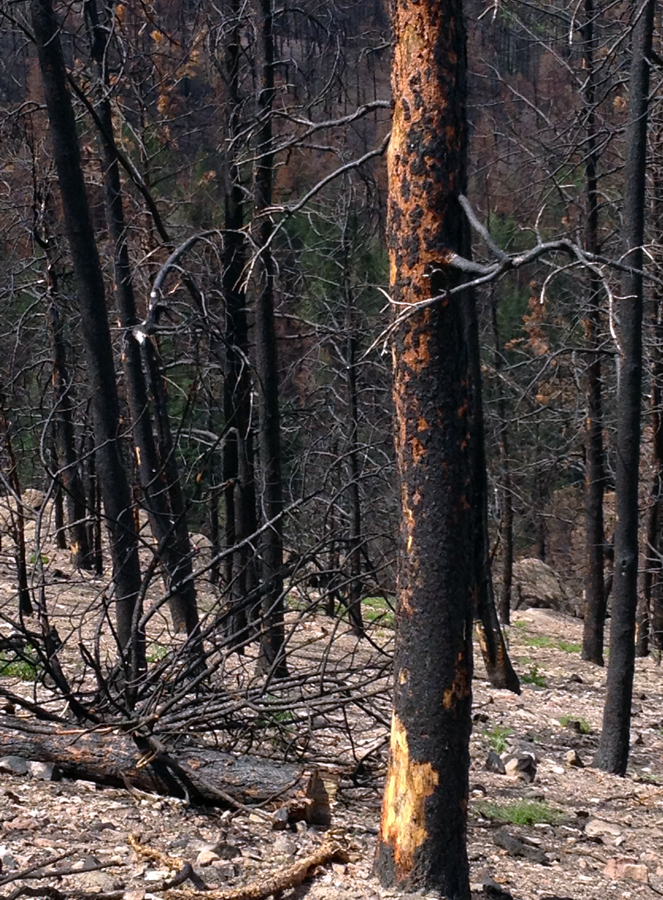
Perhaps the biggest message Dave wanted us to take home was the patchwork nature of a forest fire in general. “Look out on that burn area,” he urged. We looked out on a variegated scene. Browned and blackened trees alternated with live stands of ponderosas as far as we could see.
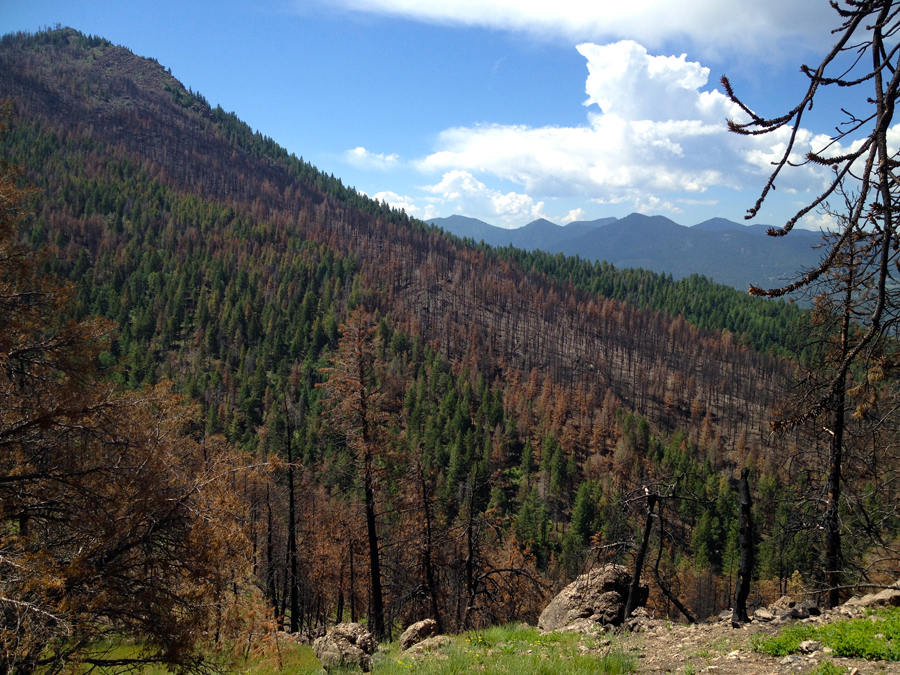
“A forest fire helps biodiversity,” he said. “It opens up areas of the forest floor that have been shaded for decades. And it releases some species to grow in places where they have not grown for years.”
He pointed to a tiny clump of aspen hugging the ground. “Aspen trees have been crowded out of this hillside by ponderosa shade for the past sixty or seventy years. Now the ground is opened up, and the aspens have a chance to repopulate this hillside. In another decade this side of the mountain will likely be covered with aspen.”
Because the effects of a fire are spotty, a fire in a ponderosa forest reduces the monoculture of the forest, encouraging new species of plants—and therefore insects and birds and animals—to emerge. A fire supports nature’s endless thirst for variety. And since a diverse landscape is usually a more resilient one, a forest fire promotes the long-term health of the local ecosystem.
I’ve met people who can’t bear to walk in a burned forest. It’s too painful, they say. No green to look at, only the ruined skeletons of trees. I have a different view. A burned forest may not refresh like a green one, but a burned forest tells a story—a story of change and opportunity, a story of starting over that may appeal if you’re a pioneer. It’s a story I find as enlivening in its own way—and a lot more bracing—than the nourishing beauty of lush green land. In a burn zone, one walks the knife edge between life and death.
But like the desert, a burned forest is best taken in small doses. That morning our hike was cut short by threatening clouds and rumbling thunder. Instead of remaining near the peak of the mountain to tempt lightning, we retreated below to sit and talk among the penstemon.
Leaving the charred forest early was fine with me. I felt relieved to get back among green things, to breathe deeply and relax.
And I was grateful all over again that a year ago today, the wind did not carry embers on that very short path into the town below.
